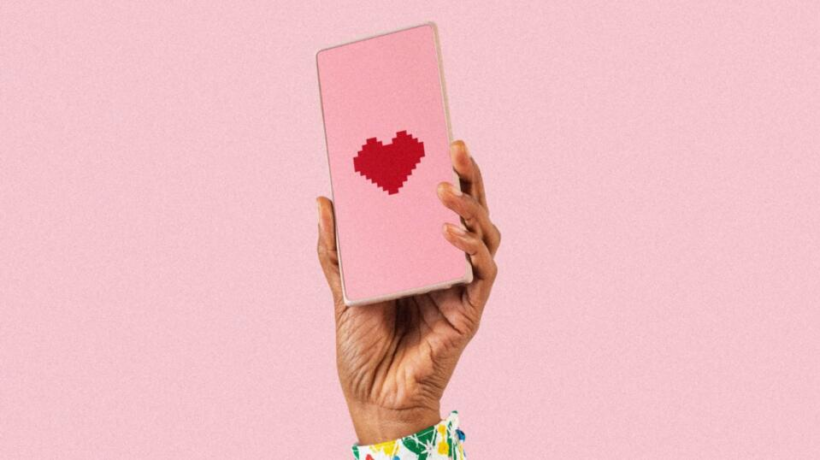By many estimates, the greeting card industry is in decline, with sales shrinking and retailers moving to cut shelf space in recent years as birthday wishes and holiday greetings moved to social media and text.
But for those looking to send their loved ones something more than a text this Valentine’s Day but worried a paper card is a little too 20th century, consider e-cards, which in recent years have moved beyond the basic GIFs of holidays past, with digital card makers offering customization options, embeddable video, digital gift card options, and even artificial intelligence to help you draft the right sentiment.
“One of the first, biggest holidays of the year is Valentine’s Day for our greeting card business,” says Matt Douglas, founder and CEO of Sincere, the parent company of online card maker, Punchbowl.
Douglas, who prefers the term digital greeting card to e-card, in order to emphasize his product’s similarities to print cards, says his business got a big boost in 2020, when voyaging to a drugstore to buy paper greeting cards suddenly felt like a risky proposition. Just as organizations previously committed to in-person meetings suddenly saw the advantage of Zoom, envelope-and-stamp stalwarts came to explore the advantages of digital alternatives.
“We had never seen anything like it in our business,” he says. “It was an inflection point where all of a sudden, the world said, ‘I want to send a greeting card that looks and feels like a greeting card, but I don’t want paper.’”
And just as e-books offer advantages like adjustable fonts and searchability, digital cards bring some pluses, such as embeddable video and notifications when recipients open the cards, he points out. Even when Punchbowl’s cards do purposely emulate the physical cards of yore, they’re heavily customizable, with options to personalize the virtual envelope, stamp, and other design elements—within reason. “We learned the hard way you have to constrain some things,” he says. “Otherwise, consumers create abominations.”
Punchbowl is far from alone in the industry: Print greeting-card giants Hallmark and American Greetings each put their own spin on digital cards; Paperless Post (perhaps best known for the digital invitations featured in a recent Saturday Night Live sketch) offers holiday e-cards in styles from “simple and minimal” to “modern” and “boho”; and Someecards.com has its signature vintage-looking cards available for a range of occasions, from anniversary to divorce. Even NASA has gotten into the act, with customizable e-Valentines featuring satellites, spacecraft, and celestial bodies.
Some nonprofits have e-cards, too, in a kind of update to the gifts like note cards and mailing labels sent to prospective donors in years past. The World Wildlife Fund’s free e-cards (mostly featuring animal puns) help bring in new supporters. Donors giving a loved one’s name can send an e-card announcing the gift, which Sarah Robie, deputy director of digital fundraising and stewardship, says brought in tens of thousands of dollars in revenue last holiday season.
“We often have donors write into us after making a donation, thanking us for offering e-cards or feeling the need to give since they use our free e-cards so often,” Robie said in an email. “And if we don’t update our designs—they notice and ask for new species!”
For a different kind of humor, JibJab, perhaps still best known in internet lore for its 2004 Bush-Kerry election parody of “This Land Is Your Land,” has focused on e-cards since 2007. That’s when it pioneered a distinctive type of card that lets senders embed their own faces on an image or video. The style persists today with Valentines featuring songs such as Sonny and Cher’s “I Got You Babe” and Grease show tune “You’re the One That I Want”—and the technique feels comfortingly far from the uncanny valley of AI deepfakes. CEO Paul Hanges freely alludes to “oversize heads” and “marionette jaws” as elements of JibJab’s signature humor.
“We’re different than other greeting card companies in that we do really lean into the fun, quirky, humorous, don’t-take yourself-too-seriously type of greeting cards,” he says.
And while some of JibJab’s cards do rely on nostalgia, the company has worked with newer influencers, rolling out vertical content shareable on Tiktok and Instagram Reels as the market has shifted from emailed cards and Facebook greetings—and, as of last October, branched out into party invitations. “We’ve been very surprised and very happy with the crossover—people who use our e-cards and come back and use our invites,” says Hanges.
Other card providers also offer their own takes on video greetings—American Greetings gives members of a subscription program access to options like having Weird Al Yankovic or Dolly Parton sing Happy Birthday to their friends by name or sending a custom Valentine full of singing dogs. The company, which declined to comment for this article, also lets senders build custom digital cards with AI assistants to help draft the perfect message.
Rival Hallmark offers its own e-cards, as well as a kind of hybrid service, where buyers can customize a card online and have it mailed directly to the recipient, with no need for a trip to the post office. “Senders can add their own photos or custom messages and handwriting to a real Hallmark card that is then sent directly from Hallmark.com to the recipient,” Hallmark senior director Jackie Stegner said in an email.
And while trends like vertical video and various humor concepts may come and go, digital card makers say they’re confident the medium itself is here to stay as long as people need to send messages for which a basic text simply won’t do.
“The day after Christmas is one of the biggest greeting card holidays of the year as well,” says Sincere’s Douglas. “Is a text or Snapchat enough to say thank you to someone who just spent $100 on gifts for you? Probably not.”







